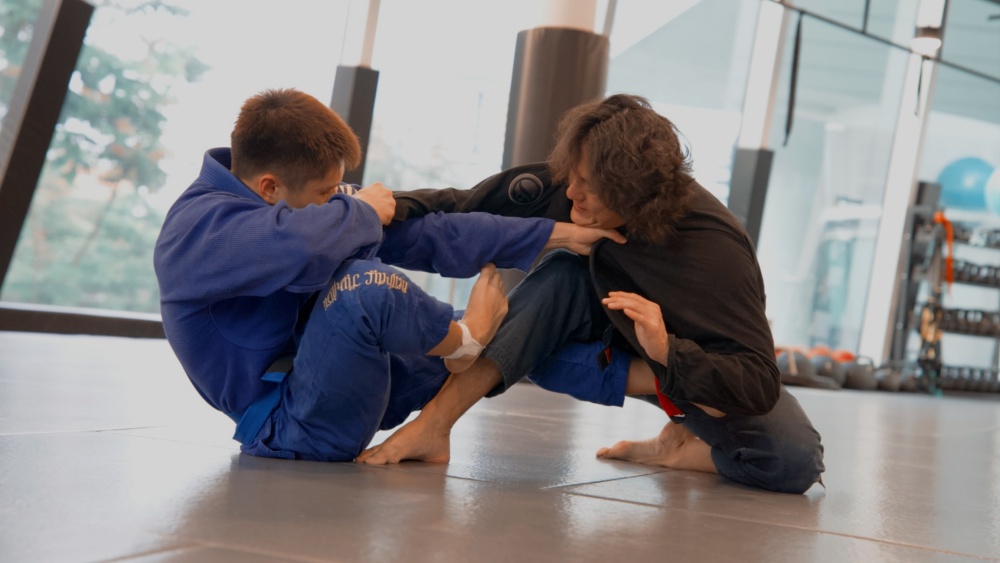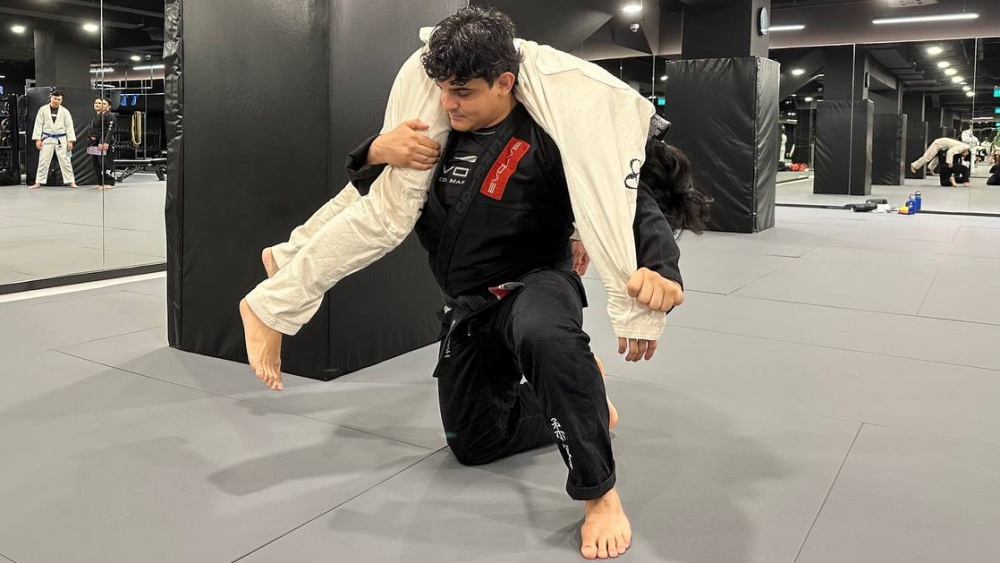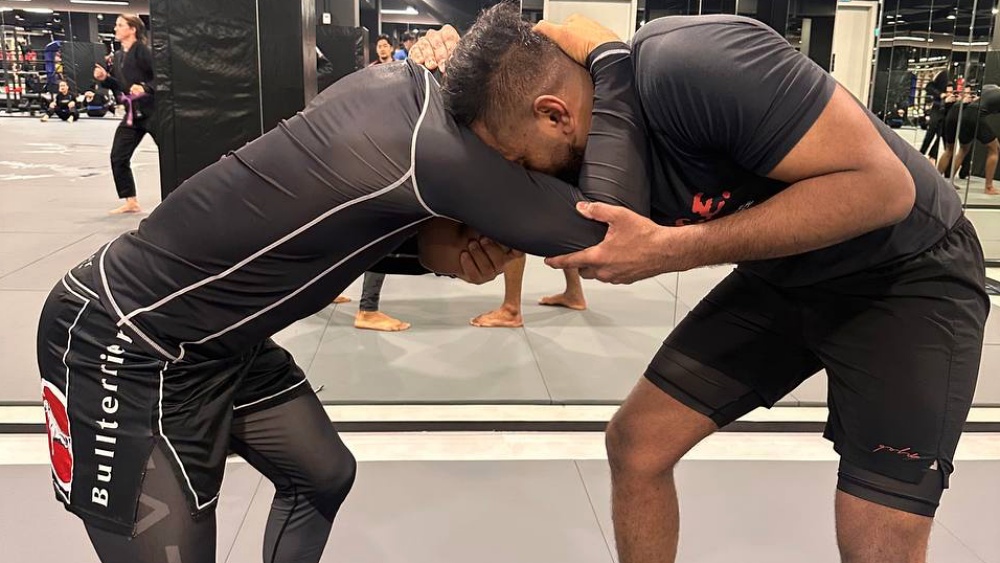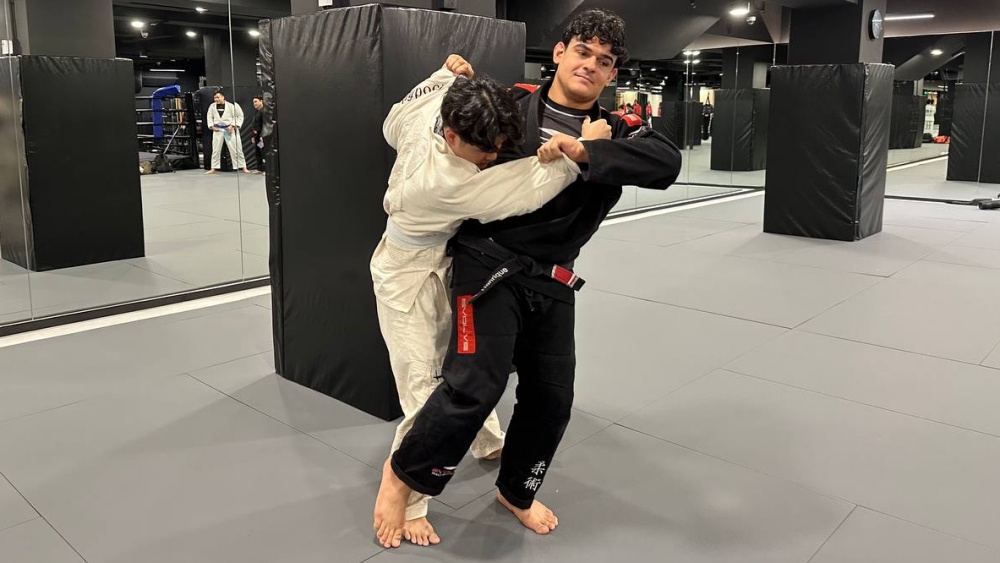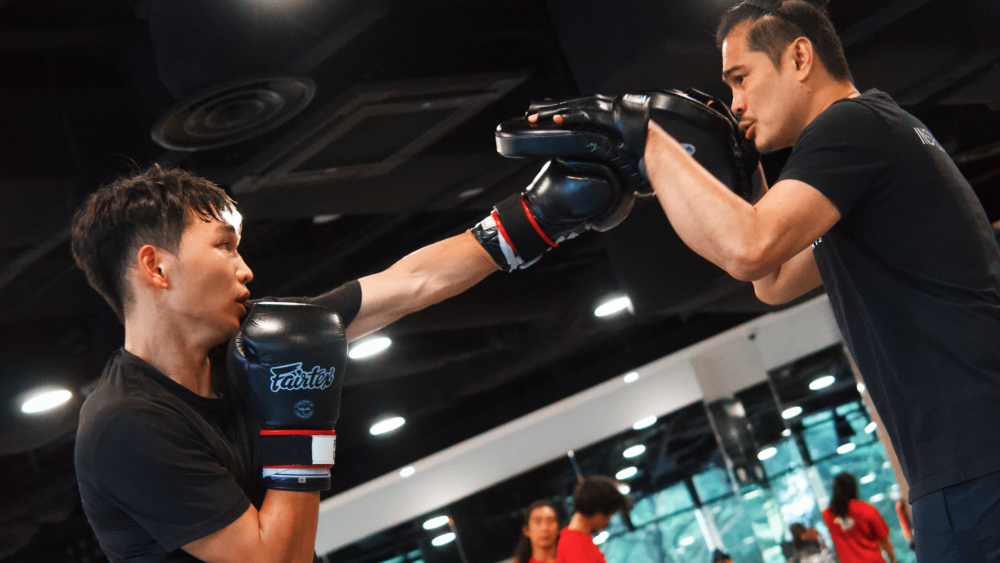In Brazilian Jiu-Jitsu and Submission Grappling, the rise of the leg lock game over the past years has been nothing short of fascinating. John Danaher famously said that leglocks and takedowns were the few weaknesses of the sport several years ago. Nowadays, this is absolutely not the case anymore, and it is safe to say that BJJ’s leg attacks are by far the best across all martial arts. To remain competitive and well-rounded in today’s competitive scene, grapplers must know how to defend against leg locks. This article will dive into the most common leg lock escapes in Brazilian Jiu-Jitsu.
The Leg Lock Positions
Let’s first discuss the different leg entanglements where leg locks can be employed.
1) Irimi (Standard) Ashi Garami
Irimi ashi garami is the most basic leg lock position and is likely the first that comes to mind when the topic of leg locks is discussed. It is performed by controlling an opponent’s leg by pinching your knees together on the inside of their thigh while your outside foot is posted on their hip, and the other wraps around to clamp the opponent’s thigh in place.
2) Cross Ashi Garami
The cross ashi garami is similar in some ways to the standard ashi garami, where both your legs aren’t locked together. However, instead of clamping their leg and having their feet outside to the bottom of your hip, you have the opponent’s trapped leg across your body.
3) Outside Ashi Garami
The outside ashi garami is one of the leg entanglement positions that gives better control and finishing position. When both your feet and ankles are crossed, it provides better control. In this leg entanglement, you use your inside leg to step over the opponent’s trapped leg, which is outside of their hip. You use your outside leg to cross your ankles together, with your outside foot on top of your inside foot.
4) Inside Ashi Garami
A common way to get into the inside ashi garami is to start from the regular ashi garami. It is when you bring your outside leg over the opponent’s trapped leg, also known as the “reap,” and weave it into a configuration that entangles the opponent’s other leg.
5) Butterfly Ashi Garami
The butterfly ashi garami mixes the ashi garami and butterfly hook. It is the opposite of the ashi garami, where your inside leg comes on top of the opponent’s trapped leg, while your outside leg does a butterfly hook. Unlike in the regular ashi, where your outside leg is trapping over the opponent’s leg while your foot is on their hip, and your inside leg is hooked on their leg.
6) The 411
This leg entanglement is called the 411 because your legs trap the opponent’s leg, doing a triangle on it. Thus, your leg mimics the number “4,” while the opponent’s represents the number “11.” It is widely considered the most powerful leg lock position.
The fifty-fifty is where both grappler’s inside legs are intertwined. This position is called as it is because both grapplers have the same options of attack, having a mirror-like position. It is an essential position to work on, especially during scrambles.
8) Eighty-Twenty (80/20)
The eighty-twenty is a better position than the fifty-fifty as the attacker now has better options, thus the name eighty, while the opponent only has twenty. Getting into this position means dropping to your side to get better leverage. This will help you separate the opponent’s legs from each other, which will usually be trapped by being triangled. You can drop your inside knee to the mat once the opponent’s legs are separated.
Escaping The Leg Locks
There are various ways to apply leg locks and different techniques to escape them. Let’s explore some of the leg locks commonly used in typical leg entanglement scenarios.
1) Standard Ashi Ankle Lock Escape
Before attempting to escape the ashi garami straight ankle lock, initially “boot” your foot by pointing your toes towards you to buy some time. If your left leg is caught, post on the mat with your left hand. Use your right hand to control the opponent’s outside leg—the leg controlling you—by pinning it on the mat. As you pin the opponent’s leg, put all your weight on your left arm and hop over the opponent’s outside leg. Once you’ve moved your glute out, start scooting and push the opponent’s inside leg knee so they can’t follow up.
2) Inside Heel Hook Escape
The inside heel hook from the inside ashi garami position is more dangerous than the outside. This escape is called the “heel slip” and must be practiced cautiously with your training partners, as the ligaments are weaker when defending from the inside heel hook. The danger is when your knee is outside the line of your ankle, making it the opponent’s goal when attacking with the inside heel hook.
To defend, take your knee inside the line by grabbing the opponent’s arm or legs, and point your toes down as you push and pull with it to slip your heel.
3) Outside Heel Hook Escape
From the outside ashi garami, the primary threat is the heel hook. The simplest way to defend this is to connect your feet together before the opponent grabs your heel. This prevents the opponent from getting under your heel. Remember that any time the top of your foot starts facing the opponent, your heel is exposed.
Always turn the sole of your foot towards the opponent and connect your feet. As the opponent begins going belly down to dig your heel using their bottom arm, reach for the opponent’s bottom forearm to control it. You can start escaping from here, as it will now be more challenging for the opponent to go belly up as his bottom arm is trapped behind. Go into your knee, control their top arm, and start sprawling to free your leg. In this position, you can now move around and take their back.
4) Knee Bar Escape
When escaping the knee bar, clear your knee line as fast as possible. Assuming the opponent has the knee bar, use your free leg to push behind their top knee (between the opponent’s calf and hamstring). Pull yourself out of the position from here to clear the knee line. Now that the knee line is clear, no matter how hard the opponent tries to finish the knee bar, you will be in a safe position. If you can reach the opponent’s top feet as you push behind their knee, escaping and pulling your leg out can be easier.
Conclusion
As part of the modern grappling meta, grapplers must eliminate the fear of leg locks, especially when competition is involved. Studying the defenses and escapes can help a grappler’s overall growth. Exposing yourself to these situations will lead to a better understanding and overall development of your game.
You may also like:

